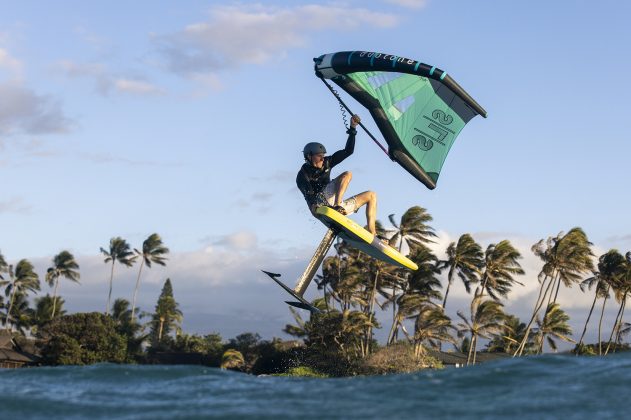LOWDOWN: BOOM V HANDLES
Klaas Voget and Nik Baker offer some advice on the merits of booms or handles on wings.
Words – Klaas Voget & Nik Baker. // Photos – Toby Bromwich
Klaas Voget – “‘Should I choose a wing with a boom or one with handles?’ That’s a common question I’m getting and the answer isn’t that straightforward. It really depends on the spot and conditions, as well as the skill set and preferences of the rider.
There’s the pro-handle argument out there that it’s more complicated and takes longer to set up a wing with a boom – which is correct, it takes about 20 seconds to install the boom. Assuming you’re out there for a 2 hour-long session enjoying the benefits of a boom, I think we can neglect that point. The next argument is the packing size – which is also correct, as the boom doesn’t fit the wing’s bag. Taking into account the boom is still shorter than your board; the total packing size of your gear isn’t really reduced by choosing a handle wing. Still, some riders simply want to throw their wing on the ground, inflate it and go. If that’s you – this boom isn’t for you.
Riding style
When it comes to the actual riding, there are arguments for either style of wing. Also your previous history in wind sports might give you a preference on whether you’re a boom fan or want to ride handles. A wing is not far off the power delivery of a windsurfing sail and usually windsurfers feel right at home grabbing a boom, while kitesurfers often initially have to learn how to generate power or find the wing’s centre of effort. One rider enjoys the freedom to grab anywhere, while the other rider is unable to cope with the infinite hand placement options in the early learning stages. Once you get going and start learning the basic moves like gybes and tacks, there’s no two opinions, the boom just makes it easy. In my local bay the learning curve of boom wingers was way steeper compared to the handle guys. The reason is quite simple, when learning the basics it’s often split seconds that make the difference of foiling through a tack or stalling and coming off the foil. Riding with a boom, you have your hand on the ‘gas’ just more intuitively and ultimately more quickly coming out of a manoeuvre compared to looking for the handle, grabbing it and sheeting in. The latest handle wings with rigid handles make it easier to have the hand in place and the boom advantage becomes a bit smaller, but it’s still not quite the same.
Boom benefits
Once you know how to keep your flow through manoeuvres and have your handle positions dialled in, then the benefits encountered in the learning stages becomes a bit smaller, but there’s still some boom benefits you can’t ignore. The biggest one is probably one-handed riding. Having the option to just slide your hand towards the centre of effort and ride one-handed can be especially relaxing when riding toeside, by taking a break from constant power and sheeting in. The next benefit is in freestyle tricks. There’s moves that are just way harder to pull off with handles, like if it’s carved wing rotations or jumping tricks like a backside 360, having a bar to throw the hand at, grab and sheet in just makes these tricks much easier compared to finding a handle and often missing it.
Handle fans
Ok, enough boom-upsides, as there’s a huge fanbase of handles on wings and there’s also some reasons besides the two initial points we made at the start. Handle wings are usually lighter, so it’s easier for the designer to build a wing that has a nice drift. The more you reduce the weight of the wing, the easier it will float behind you and follow your line while surfing. Especially if you’re into riding swell, surfing waves or love downwinders, that’s a real plus. Most webbing handles from the early days are quite light and don’t add a lot of weight to the strut of the wing, also they are not expensive to produce, which keeps the cost of the wing somewhat down. Modern rigid handles combine the direct steering of a boom with simplicity for setting up and packing, plus they are relatively light weight, so for handle wings this is surely the way forward.
At Duotone we placed the SLICK – the wing with the mini boom – at the freeride/freestyle side of things, with a shorter wingspan for better rotations and ease of use for a learner to avoid catching the wing tips. The UNIT – coming with two rigid handles – has the wider span for better drift stability and great surfing and luffing behaviour, following you effortlessly on the wave. Both wings have a wide range and work great for jumping too. I hope this helps you to find your preferred wing style!”
Nik’s view
Nik Baker – “The boom is really beneficial for grabbing as you go from your knees to the wing. Not only when you’re a learner, but also when you’re learning to ride much smaller boards and the margin for error is even shorter before the board pops out in front or behind you. This is largely exaggerated when you go from flat to choppy water conditions.”


